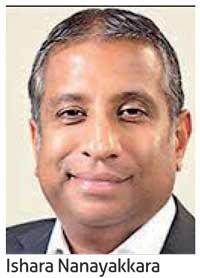16 Apr 2020 - {{hitsCtrl.values.hits}}
The LOLC group in a recent statement said it has received US $ 422 million as the first tranche of the proceeds of the PRASAC Cambodia sale.

“The balance of US $ 181 million will be due in 2022 and the post-transaction value of PRASAC is valued at US $ 862 million,” the statement said.
In January this year, the LOLC group announced of its agreement to sell its 70 percent stake held in Cambodia’s largest microfinance company, PRASAC to the world’s sixth largest commercial bank and Korea’s biggest commercial bank, Kookmin for US $ 603 million (Rs.120 billion).
Resulting from the PRASAC sale, the balance sheet of LOLC will strengthen further providing tremendous capacity and stability for the next level of growth that the group envisages.
The stronger group balance sheet will also provide the necessary impetus for the local financial services companies such as LOLC Finance PLC, LOLC Development Finance PLC and Commercial Leasing & Finance PLC, to grow their businesses further.
“This transaction is a significant milestone not only for LOLC but also for Sri Lanka, especially as the nation is facing challenging times. For the LOLC group, the value that this investment has created portrays its long-term vision and proactive business strategy.
This transaction is significant to Sri Lanka with the foreign currency inflow, during these dire times beset on the entire world at large,” the statement said.
Following the receipt of funds, the Sri Lankan rupee, which had passed Rs.200 against the US dollar for the first time in history, made gains and as of yesterday, the selling rate stood at Rs.195.78 per dollar.
With this transaction, LOLC exits from its maiden overseas investment, made in 2007 in PRASAC. LOLC’s initial investment in PRASAC, an 18 percent stake, was made at the invitation of FMO, the Netherlands government’s development finance company, Belgian Investment Company for Developing Countries and Dragon Capital, a private equity fund.
LOLC’s expertise as an aggressive but stable practitioner in microfinance and its active involvement in PRASAC made it the largest and most profitable microfinance institution in Cambodia, in less than a decade.
Even though LOLC exits from PRASAC, the company has no plans to withdraw from Cambodia, as it currently has a 97 percent stake in LOLC Cambodia, the fourth largest microfinance company, in terms of market position and the second most profitable microfinance institution in Cambodia.
LOLC Cambodia holds in excess of US $ 1 billion in total assets, a US $ 832 million portfolio and a deposit base of US $ 485 million.
LOLC’s global footprint also includes microfinance operations in Myanmar, Pakistan, the Philippines, Indonesia, Nigeria and Zambia, together with a few more handpicked destinations in the pipeline.
LOLC is now expanding its global presence further by revolutionising the insurance industry in Cambodia, with the latest approval received to set up microinsurance under the company, Serendib Micro Insurance PLC.
LOLC has also received the preliminary approval to set up a representative office in Myanmar, to implement its microinsurance business.
Speaking of the significant transaction, LOCL Group Deputy Chairman Ishara Nanayakkara said, “We are proud that we were able to secure the required approvals to conclude this transaction swiftly, despite the current challenges across the globe.
We appreciate all the guidance, support and encouragement given to us by the Central Bank of Sri Lanka and for the support given by the National Bank of Cambodia and Financial Services Commission in Korea. We are pleased that this landmark transaction will also facilitate a significant inflow of foreign currency to the country.”
17 Nov 2024 2 hours ago
16 Nov 2024 7 hours ago
16 Nov 2024 8 hours ago
16 Nov 2024 8 hours ago
16 Nov 2024 8 hours ago